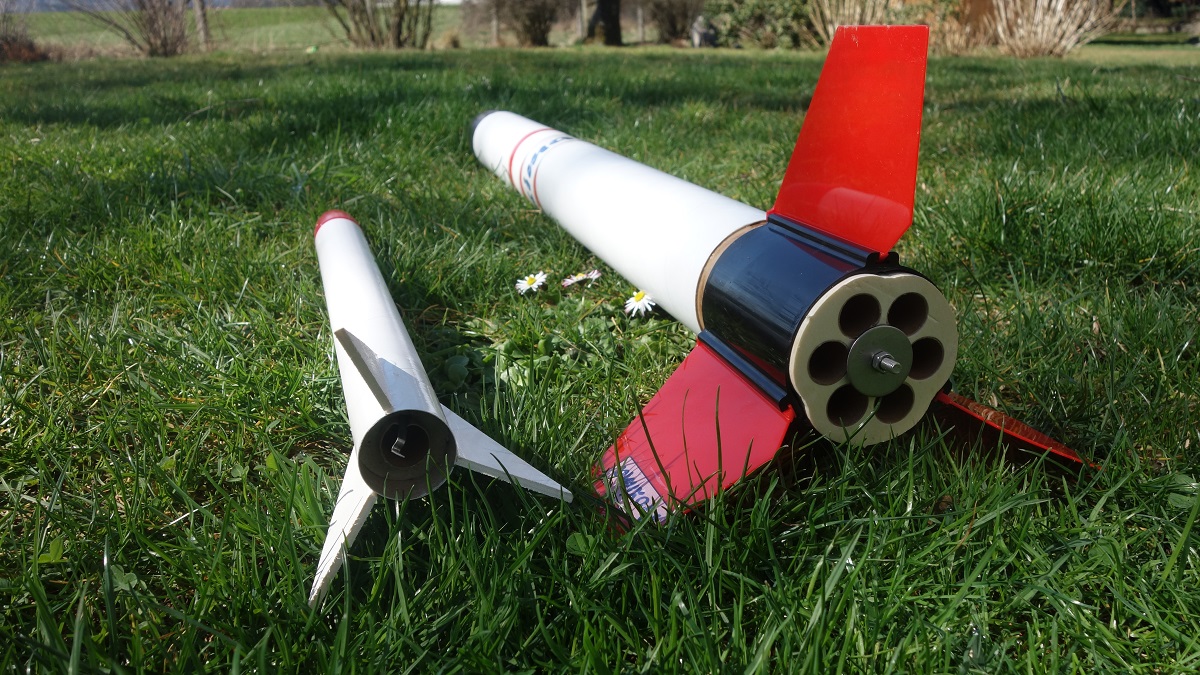STEP 2: GAINING EXPERIENCE
Next step is to gain some experience with launching rockets. Since I need to ignite three boosters simultaneously, it is obvious that I need to use an electric ignition system, with is able to ignite all boosters exactly at the same time. Furthermore I want to test engine clustering (the Falcon Not So Heavy is far too heavy for a single B or C engine). Last but not least I want to launch some kind of payload, a camera to film the launch from a POV perspective and an altimeter to get some data how high the rocket did fly.
First Rocket Launches
For the first few launches I used a very small and cheap rocket named “Luna”, it is pretty light and needs just a single B4-4 engine to get high enough to be almost out of sight. Unfortunately I lost it during the 5th flight, the wind was a little bit too strong and the next forest too close ...
By the way: The electric ignition system worked flawlessly at every launch.

Three Booster Ignition Test
Purpose of the test ist to find out if the igniter has enough power to fire all three boosters simultaneously. At least with full batteries it worked fine - as the slow motion movie proves.
Building an Engine - Cluster - Rocket
Prior to handcrafting my clustered "Falcon Not So Heavy" I have decided to build a cluster rocket from a kit – to save time and money. The "Proxima" is a huge model rocket with an overall length of 109cm and 75mm diameter. It uses a 6- engine- cluster to get enough thrust for more than 600 g takeoff weight including a camera and an altimeter as payload. With a combination of three C6-5 engines and three C6-P engines the rocket reaches 230 to 250 meters depending on wind, which is fine for me. Please keep in mind: The higher you fly the higher the chance that you will never find your rocket again.

